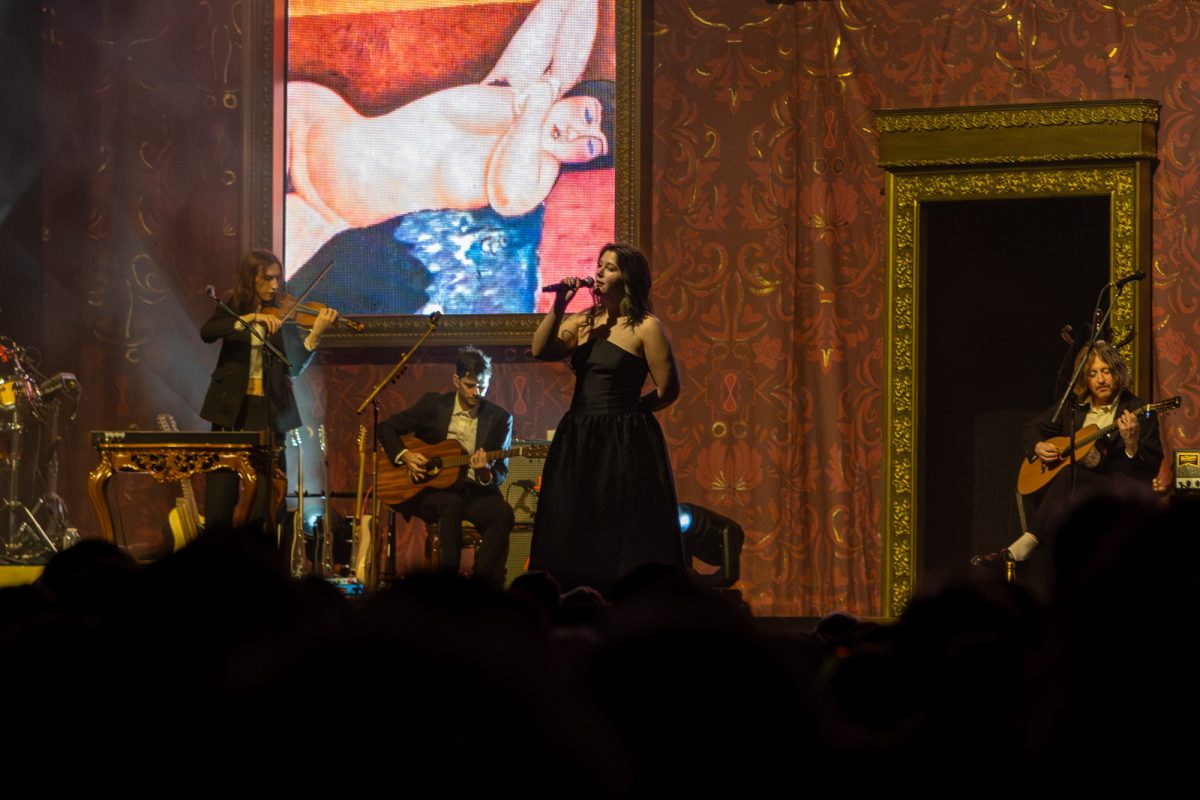The biggest news on March 18, 1990 should have been the Boston St. Patrick’s Day Parade. Instead, the largest art heist in history silently took place in Fenway’s Venetian oasis, claiming 13 missing works worth more than $500 million total.

Thirty-one years later and the missing art — including prestigious Rembrandts and a rare Vermeer — have yet to be found and returned. But the chase is long from over.
“This is a Robbery: The World’s Greatest Art Heist” — a four-part docuseries — premiered Wednesday on Netflix. As of Monday, it was the second most popular program in the United States on the platform.
Boston-area local Colin Barnicle, the director of the series, said in an interview he pursued the unsolved case because of its local lore and his desire to intimately dissect the “ticking clock” of the theft.
“It’s one of the great mysteries of our hometown,” he said. “When you start to research it, it’s just so hard not to get sucked in to the mystery.”
Isabella Stewart Gardner, an art collector in the late 1800s and early 1900s, oversaw construction and curated the museum from her personal collection in the then-undeveloped Back Bay Fens, a palace wholly unique to her style. In her will, she wrote nothing in the museum could be altered, changed or sold.
On that mid-March day 31 years ago, two men posing as police officers were buzzed into the museum against protocol, and handcuffed and tied up security. In 81 minutes, they stole 13 works of art — including Rembrandt’s “Christ in the Storm on the Sea of Galilee” and Vermeer’s “The Concert” — pulling off history’s largest art heist and property theft to date.
No arrests have been made.
In following Gardner’s will, the frames of the stolen works still hang on the walls, a grim reminder of the theft no one can seem to solve. Barnicle said wrestling with the unknown contributed to the difficulty of pursuing this production — but so did the thrill of the chase.
“You’re running headlong into the last act, and it’s unsolved,” he said. “How do you create, or how do you make sure that the viewer has some sort of catharsis with that?”
Barnicle — who owns the Emmy Award-winning production company Barnicle Brothers with his brother, Nick — said the best part of bringing the history to life was working out the theories: going to courthouses to comb through files, collecting information from families and investigating each theory.
“It was fun to investigate and argue with my brother about the different theories,” he said. “We had to go through every single other theory, and that was a really fun part to do researching and kind of being a detective.”
It was also what made it frustrating, he said.
The process of creating the docuseries started in 2014, Barnacle said. In the end, only a fraction of the discovery is illustrated in the film.
The crew shot at night in the “spooky” halls of the unlit museum, mirroring the late-night theft in a unique way, Barnicle said.
“Nobody’s filmed at night there for 25 years or something like that,” he said. “It really gives a different sense of what the robbers were seeing and experiencing in there.”
The finished product layers evocations — reenactments of witness events based in reality — with real footage, photos, maps and B-roll of the museum and city. Every part of the series was grounded in fact, he said, down to the camera angle of the reenactments and the frames per second.
“We try not to show anything twice,” he said. “In the evocations, throughout the four-part series, they slightly change from episode to episode to try to show that, you know, people are misremembering, or they’re forgetting.”
The final product both encapsulates the heart-pounding chase of suspects, tips and leads and contemplative moments of rest when the film focuses on the artwork itself animated into the empty frames it left behind — places where Barnicle made the art a “character” in the film itself.
“We felt it was important to kind of break up the fast pace because you’re hurtling headlong and it’s detail-oriented,” he said, “and the best way to hit the pause button was to try to ground ourselves inside the museum with the art that was lost.”
Jay O’Callahan, a storyteller who spent January of 1999 as an artist-in-residence at the museum, grew up in Brookline, Massachusetts. Going to the museum with his mother as a teenager, he said he was able to see the paintings long before the theft and became very familiar with their beauty.
He recalled one night during his residency, nearly a decade after the works were stolen, when he traversed the museum with a guard at night, flashlight in hand.
“We go to the Dutch Room, which is my favorite room, and shine the light on the paintings,” he said. “Instead of [Christ in] the Storm [on] the Sea of Galilee, there’s a blank space and then the Vermeer, a blank space, and it just seemed, it seemed sad.”
As an artist-in-resident, with permission, he was able to walk around the grounds at night, and said he’d imagine where the thieves would have hidden the work or what they thought of the theft they were committing.
In a writers group, O’Callahan said he wrote his own fictitious novel about a Gardner robbery, though he never published it. He said the sadness over the loss still grows.
“[Gardner] has this imagination that she must have had as a child and she’s able to create it [the museum],” he said. “It’s not destroyed, but it is defiled.”
Laura Anderson Barbata, a transdisciplinary artist who was an artist in-residence of the museum in 2016, said being surrounded by Gardner’s art helped her “physically, spiritually, emotionally.”
They said the heist, in claiming the 13 works, robbed a part of “humanity.”
“In such a violent way, to cut out a painting, to us it’s like you’ve cut into my body,” Barbata said. “To be there and to see the frames, you have many different emotions that come to you.”
Barbata said the frames, to her, represent both a memorial and a “space of light.”
“It feels like the empty frames are also about ‘you’re coming back, we are here waiting for you, you have not been forgotten,” they said. “It’s this place of optimism and of faith in the future.”
Gregory Maguire — author of The New York Times Best Seller 1995 “Wicked” — was an artist-in-residence at the Isabella Stewart Gardner Museum a year before his claim to fame, doing the book’s final revisions and thinking about his next work, “Confessions of an Ugly Stepsister.”
Maguire, who lived in the old carriage house for his residency, wrote in an email his time was characterized both by the “daunting magnificence” of the company and the absence of the empty frames.
The frames, however, were also a reminder to him to fill the void.
“I felt the pain of the loss, which lingers still; it’s like having beloved family members lost at sea. Are they going to turn up on some desert island? Alive? Well? One can only hope,” he wrote. “In their absence, one remembers all the harder, to keep them alive.”
Maguire wrote the theft is both a global tragedy and a “local sorrow” — felt deeply by those close. However, he wrote “there’s still time” to solve it and bring the beloved art home.
A museum spokesperson wrote in an emailed statement that “the Museum’s commitment to resolving the crime has never diminished since its occurrence 31 years ago,” and that they are optimistic about its return.
The museum invites information through email and promises confidentiality. A $10 million reward will be given to anyone with direct information for the safe retrieval of the art.
For Barnicle, he said he thinks the works will return, at least the lesser-known ones. In the meantime, however, he invites college students and any viewers to become “armchair detectives” and take on the mystery themselves.
“My real hope is it’s one of those huge Reddit boards that happens where there’s all these ideas and information passing around,” he said. “We really want to … saturate the audience so they could have the tools to be able to figure it out for themselves. That’s the goal.”

























































































































